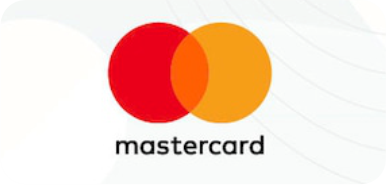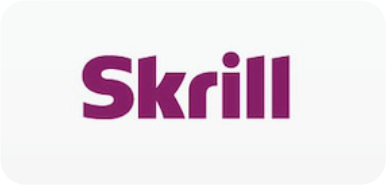If you want to analyze financial markets like a pro, you need to understand how to plot Fibonacci retracement. For the past years, this technical analysis tool has been widely used by traders to identify potential support and resistance levels, helping them make informed trading decisions.
Therefore, irrespective of what you trade, be it stocks, forex, or cryptocurrencies, Fibonacci retracement is an essential concept that can significantly improve your market predictions.
I assure you that by the end of this article, you will have an in-depth understanding of Fibonacci retracement, how to plot it accurately, and how to use it effectively in your trading strategy.
What is Fibonacci Retracement in Trading?
Before you learn how to plot Fibonacci retracement, it is important for you to understand the basic concept behind it. The Fibonacci sequence is a mathematical series where each number is the sum of the two preceding ones (e.g., 0, 1, 1, 2, 3, 5, 8, 13, etc.). In technical analysis, traders use Fibonacci ratios derived from this sequence (23.6%, 38.2%, 50%, 61.8%, and 78.6%) to identify retracement levels where price movements may reverse or consolidate.
Why Do Traders Use Fibonacci Retracement?
Traders use Fibonacci retracement because it helps them make better trading decisions by analyzing price movements and this is how it does it:
- Identifying Key Support and Resistance Levels: Fibonacci retracement levels act as natural barriers where prices may stop and reverse. Traders watch these levels to predict where the market might change direction.
- Spotting Potential Entry and Exit Points: By marking important retracement levels, traders can determine the best places to enter or exit a trade. This helps them buy low and sell high.
- Determining Stop-Loss and Take-Profit Levels: Setting a stop-loss at a Fibonacci level can protect traders from excessive losses. Similarly, take-profit levels can be placed at key retracement zones to secure profits before the market reverses.
- Analyzing Trends and Price Pullbacks: Markets don’t move in a straight line; they rise and fall in waves. Fibonacci retracement helps traders identify temporary price pullbacks within a trend, allowing them to trade with the market’s natural movement.
How to Plot Fibonacci Retracement
Plotting Fibonacci retracement on your trading chart is a straightforward process. Follow these steps to ensure accuracy:
1. Identify the Trend
To use Fibonacci retracement effectively, you need to determine whether the market is in an uptrend or downtrend. In an uptrend, draw the Fibonacci retracement from the lowest swing low to the highest swing high while in a downtrend, draw from the highest swing high to the lowest swing low.
2. Select the Fibonacci Retracement Tool
Most trading platforms, including MetaTrader 4, TradingView, ThinkorSwim, and Binance, have a built-in Fibonacci retracement tool. Open your preferred charting software and select the Fibonacci retracement tool from the toolbar.
3. Plot the Fibonacci Levels
When it comes to plotting fibonacci levels, Do the following:
- Click on the swing low (for uptrend) or swing high (for downtrend).
- Drag the tool to the opposite end (swing high for uptrend, swing low for downtrend).
- The Fibonacci retracement levels will automatically appear on your chart.
4. Analyze Key Levels
The most important Fibonacci levels to watch are:
- 23.6% – Minor retracement; indicates shallow pullbacks.
- 38.2% and 50% – Moderate retracement; often used for trade entries.
- 61.8% – The “Golden Ratio”; strong retracement level where reversals frequently occur.
- 78.6% – Deep retracement; price may still reverse but with lower probability.
5. Use Fibonacci with Other Indicators
To increase accuracy, combine Fibonacci retracement with Moving Averages (MA), RSI (Relative Strength Index), MACD (Moving Average Convergence Divergence) and Support and Resistance Zones. You can also use indicators to confirming signals, you can avoid false breakouts and improve your trading accuracy.
How to Use Fibonacci Retracement in Forex and Stock Trading
Fibonacci retracement is mostly used in forex and stock trading to determine potential price reversal zones.
Forex Trading
To apply Fibonacci Retracement in Forex, do the following:
- Identify the currency pair’s trend (bullish or bearish).
- Draw Fibonacci retracement based on recent swing highs and lows.
- Look for confluences where Fibonacci levels align with support and resistance zones.
- Enter trades near 38.2%, 50%, or 61.8% levels.
- Set stop-loss below the next retracement level.
Stock Trading
In order to apply Fibonacci in Stocks, do the following:
- Use Fibonacci retracement on stocks that show clear trends.
- Find strong support and resistance levels.
- Wait for a price pullback to a key Fibonacci level before entering a trade.
- Combine Fibonacci with volume analysis to confirm breakouts.
Common Mistakes to Avoid When Using Fibonacci Retracement
Even experienced traders make mistakes when using Fibonacci retracement. Here are some common errors and how to avoid them:
Drawing Fibonacci Incorrectly
- Always start from swing low to swing high in an uptrend.
- Start from swing high to swing low in a downtrend.
Relying Solely on Fibonacci Retracement
- Combine Fibonacci retracement with trendlines, support/resistance, and oscillators for better accuracy.
Ignoring Market Context
- Avoid using Fibonacci retracement in sideways or choppy markets, as the signals may be unreliable.
Misinterpreting the Levels
- Fibonacci retracement does not guarantee price reversal; always use confirmation indicators.
Best Fibonacci Retracement Strategies for Profitable Trading
To maximize your profits, try these Fibonacci retracement strategies:
Moving Averages
- Identify the trend using a 50-day or 200-day Moving Average.
- Use Fibonacci retracement to spot price pullbacks.
- Enter trades when Fibonacci levels align with the moving average.
RSI (Relative Strength Index)
- Wait for price to reach a key Fibonacci retracement level.
- Check RSI to see if the market is overbought (above 70) or oversold (below 30).
- If RSI confirms a reversal, enter the trade with confidence.
Fibonacci Breakout Strategy
- Look for price consolidation at a Fibonacci level.
- Wait for a strong breakout with volume confirmation.
- Enter the trade when the breakout is confirmed.
Conclusion
In summary, learning how to plot Fibonacci retracement can give you an edge in financial trading. At the same time, you can improve your trading accuracy and profitability by understanding the key levels and combining them with other indicators.
However, remember that Fibonacci retracement is not a magic tool, it should be used in conjunction with sound trading strategies, risk management, and market analysis. Now that you have this knowledge, start applying Fibonacci retracement in your trading and see the results for yourself!
Frequently Asked Questions (FAQs)
What is the best Fibonacci retracement level?
- The 61.8% level is considered the most important because it often acts as strong support or resistance.
Can Fibonacci retracement be used in crypto trading?
- Yes, Fibonacci retracement is widely used in cryptocurrency trading to identify potential price reversals.
How do I know if Fibonacci retracement will work?
- Always confirm Fibonacci levels with other indicators like trendlines, RSI, and moving averages to increase accuracy.
Is Fibonacci retracement reliable for short-term trading?
- Yes, but it works best in trending markets. For short-term trades, combine it with candlestick patterns and momentum indicators.
What is the difference between Fibonacci retracement and Fibonacci extension?
- Fibonacci retracement identifies potential reversal levels and predicts future price targets beyond the current trend.










